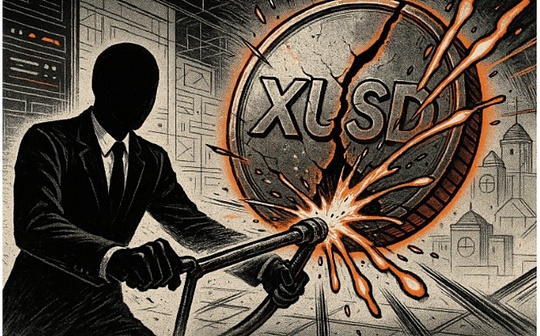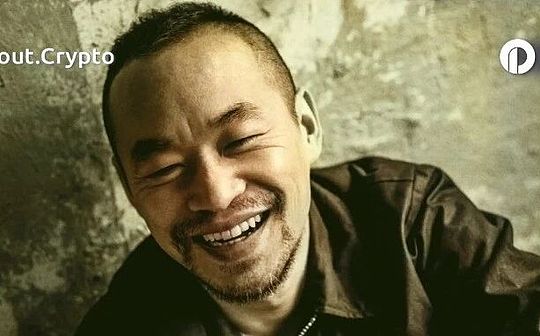
Author: YBB Capital researcher Zeke, compile: 0xjs@作 作 作 作 作
Foreword
The market has recently become more and more stagnant, which has led many OG in the field to question the purpose of the industry.
I think I will share some personal thoughts.I have always believed that many of the magnificent visions in the past have been “exposed” because they have no logical coherence from the beginning.Non -financial DAPP often tries to cover up its shortcomings by emphasizing decentralization.But the reality is that they ask me to believe their multiple signature wallets and single node servers, not Google, Twitter or YouTube, claiming that they are safe enough.Many visions have not been revealed; they have never been tested.I still believe that even if these visions are not as magnificent as they originally imagined, they are still important -they just need a strong foundation to support them.At least, they should provide decentralization or a comparable experience as Web2.
Taking TON and Solana as an example, they have been underestimated, but now they are gradually catching up with industry leaders in all aspects.The blockchain supporting applications require innovation, and innovation will promote the development of the industry in each cycle.Today, we will explore a blockchain that has been ignored for a long time -MOVE -based blockchain.
1. MOVE
Move programming language was originally developed for META project DIEM (originally called libra).DIEM aims to create a more stable and more regulatory stablecoin as the basis for the vision of the Meta Yuan universe.However, the project is facing strong opposition and ruthless pressure from global regulators.Regulatory agencies are worried that the size of DIEM and the huge user base of Facebook may pose a threat to financial stability, monetary policy and data privacy.Under the pressure, especially from the pressure from the Biden government, Meta eventually had to give up the DIEM project.
Fortunately, the core of DIEM has not been completely abandoned. Various factions split out of the original team continue to explore and develop MOVE, and later evolved into the MOVE Gemini Star we are familiar with: SUI and APTOS.In addition, there are some emerging projects, such as Linera (RUST Blockchain, which is inspired by Move) and Movement recently promoted.
So, why is a project that has been cut off halfway, why has such a far -reaching impact?MOVE, as a programming language developed by the top Web2 company as the blockchain, its complexity can be described as quite high. Its design fully considers the existing blockchain programming language, especially the performance and security issues of solidity.The goal is to create a type of system tailored for asset management and access control.I simply summarize its advantages as three points:
· Security:The primary design principle of Move language is security.It uses static type inspection and resource management to prevent common security vulnerabilities, such as overflow errors and repeat attacks.Compared with other language virtual machines, MOVE supports various security functions, as shown in the NANSEN comparison chart below.

· Combined:MOVE supports modularity and combinedability, allowing developers to easily create and combine different smart contracts to build more complex applications.
· Performance:The virtual machine of the MOVE language is optimized (support parallelism, memory management and compiler optimization), so that it can effectively execute smart contracts, thereby increasing transaction speed and throughput.
In a market full of modular EVM blockchain, Move represents a bold experiment.Although the above views may look familiar in the description of other blockchain projects, I strongly recommend that you experience them yourself to fully grasp the actual benefits of these functions.
2. SUI

2.1 architecture
As one of the twin stars, SUI has been criticized since its launch, especially about airdrops and token distribution methods.However, aside from these problems and focusing on the project itself, SUI has proven to be very good in terms of performance and user experience, especially in terms of games.This success is largely due to its innovative structure, which has improved the mainstream adoption.The following is a brief overview of SUI architecture innovation:
-
Object storage model:This component is the core of SUI to improve MOVE.Object storage model regards data as independent objects, and each object has unique identifier.Unlike the traditional database system, the object storage model does not have a fixed data structure, and can store various types of data, such as text, images, video and audio.This model allows parallel execution and horizontal expansion (adding nodes to expand the storage capacity), and the design of the SUI is carried out around this model.
-
Cause and effect:Ensure that the execution order of the transaction is consistent with its cause and effect, and avoid data conflict and inconsistency.This function enables SUI to process a large number of concurrent transactions while maintaining data consistency.
-
Narwhal and Bullshark consensus engine:SUI uses narwhal and Bullshark as its consensus engine.Narwhal is responsible for trading sorting and verification.Its working principle is to maintain local trading pools, sort the transactions based on causality, and broadcast them to ensure that all nodes have the same effective transaction order.After receiving the orderly trading list of Narwhal, Bullshark vote for the list and use Byzantine Error tolerance (BFT) consensus to ensure that all nodes agree to the transaction order.
-
Sui move: SUI has expanded the MOVE language by adding new features, such as support for NFT, asset management and data storage.
-
Sui framework: SUI provides a comprehensive framework to help developers quickly build and deploy applications.The framework includes various tools and libraries, such as Sui Wallet, Sui SDK and SUI CLI.
The SUI architecture design enables it to handle a large number of concurrent transactions while maintaining high -speed, low costs and security.In addition, the SUI MOVE language and the SUI framework provides developers with powerful tools to build a safe, scalable and friendly application.
2.2 Consensus
The SUI blockchain uses a consensus mechanism called MySticeTi, which is a consensus based on Byzantine error (BFT) to optimize low latency and high throughput.
Mysticeti allows multiple verifications to propose block parallel proposal to maximize network bandwidth and resist review.In addition, the protocol only requires a three -wheeled message to be submitted from a loop -free diagram (DAG), which meets the minimum theoretical requirements and paids in parallel with PBFT.Submitting rules allow parallel voting and block leaders to authentication, thereby further reducing median delays and tail delay.It can also tolerate unavailable leaders without significantly increased submissions.
Before the SUI main network was started, Mysticeti performed three months on the test network and achieved significant results, including the decrease of a delay by 80%.Now, tens of thousands of transactions can be processed per second, and the end -to -end delay is much lower than one second.
The SUI blockchain also uses a specific type of equity proof consensus, that is, entrusting equity certificate (DPOS).When complex transactions involving shared objects occur, SUI uses narwhal and Bullshark consensus engines to sort these transactions.Compared with other BFT consensus mechanisms used in the blockchain, the consensus of SUI has the following advantages and disadvantages:
advantage:
-
Low latency and high throughput:The MySticeTi protocol adopts parallel proposal block and optimization message transmission process, which significantly reduces consensus delays and improves network throughput.This enables the SUI blockchain to deal with tens of thousands of transactions per second, and the end -to -end delay is much lower than one second.
-
Anti -review:Mysticeti allows multiple verifications to propose block parallel to enhance the ability of network resistance censorship.
-
Tolerance for unavailable leaders:Submitting rules allow tolerance to tolerance (when leadership nodes fail, the system will automatically election new leaders) without significantly increase the submission delay.
shortcoming:
-
Complexity: The design of the MySticeTi protocol is relatively complicated, and more in -depth technical understanding is required to fully grasp its operating mechanism.
-
Security: Although the MySticeTi protocol performs well on the test network, its security needs to be further verified in practical applications.
-
Scalability: The scalability of the MySticeTi protocol still needs further observation to ensure that it can adapt to the continuous growth of the network scale and transaction volume in the future.
2.3 Account Abstract
The SUI account abstraction model is a mechanism that allows users to manage accounts and transactions in a simpler and safer way.It abstracts accounts and trading logic from the underlying blockchain protocol, thereby achieving higher levels of account management and transaction processing.
In the SUI account abstraction model, the account is no longer a simple public key-private key pair, but an object with richer attributes and behaviors.Each account has a unique identifier, called the account ID, which is associated with the public key and private key of the account.
The key components of the SUI account abstraction model include:
1. Account object:Basic unit of account in Sui.Each account object has the unique account ID and contains the attributes and behaviors of the account.
2. Account data:The core components of the account object, including the basic information of the account ID, public key, and private key to equivalent accounts.
3. Trading context:Basic unit trading in Sui.It includes transaction -related information, such as trading ID, account ID and transaction data.
4. Account logic:Define the collection of behaviors and rules of how to deal with transactions and managing its state.
SUI’s account abstraction model handles transactions through the following steps:
1. Trading creation:Users create transactions and send it to the SUI network.
2. Transaction verification:The effectiveness and integrity of SUI network verification transactions.
3. Account lookup:The SUI network finds the corresponding account object based on the account ID in the transaction.
4. Account logic execution:SUI network execute account logic to process transactions and update the account status.
5. Transaction confirmation:The SUI network confirms the transaction results and records it on the blockchain.
In simple terms, the abstract model of the SUI account is an innovative mechanism that can simplify account management and transaction processing, making applications more user -friendly.
2.4 Game
If a blockchain wants to stand out, it must lay a solid foundation.I said before that Move was a bold attempt, with two reasons:
First, in the era of modularity concept, Move -based native blockchain (such as Move Gemini) represents one of the last attempts of Layer 1, which is essentially going against the trend.But recently, the rise of various heterogeneous chains may prove that modularization is not the only answer.
Second, decide to rebuild the blockchain with a new programming language, just like trying to create a new operating system in today’s mobile market to compete with iOS and Android -this effort is destined to be full of challenges.Whether the blockchain based on MOVE can shine like Solana in the next few years, which largely depends on the development path they choose.For SUI, the answer to this challenge is the game.
Games are one of the key entry points of Web3, but most blockchain cannot support the game well.This is because the blockchain is mainly based on finance, and its decentralized architecture is essentially low performance and is not suitable for games.However, SUI is different.Its model is very suitable for DEFI applications and non -financial applications, including games.As mentioned earlier, everything is regarded as the object in SUI.In games or applications with complicated assets, SUI allows an object to have other objects (assets can own assets).For example, in the heroic game, heroes may have an inventory containing other digital assets belonging to the character.The SUI can accurately model these data hierarchical structures in a way that other blockchains cannot be achieved, so that developers can build applications without the basic limitations of the chain.
In addition, SUI also actively cooperated with the traditional Web2 giant. Last year, with the three Netmarble, NHN, NCSOFT) of the four major game giants in South Korea.Web2
3. APTOS

APTOS is another Layer 1 blockchain based on MOVE language, which also focuses on building high -performance, scalable Web3 infrastructure.Its architecture design has many similarities with SUI, but it also shows some unique features.
3.1 architecture
-
Modular design: APTOS adopts a modular architecture. Developers can independently develop and upgrade different modules to improve development speed and flexibility.
-
Bound-STM: Unlike other blockchains that need to declare data dependencies in advance, the parallel execution engine of APTOS can handle trading parallel instead of knowing the position of the data in advance, thereby increasing throughput and reducing delay.
-
Filial line transaction processing: APTOS divides transactions into multiple stages, such as communication, metadata sorting and batch storage.These stages are executed parallel using the assembly line method to maximize throughput and minimize delay.
-
Move programming language: APTOS uses MOVE programming language.Unlike SUI innovation, APTOS pays more attention to improving it, such as standardized language and introducing more powerful functions and customization functions.
-
Flexible status synchronization: This allows nodes to select different status synchronization strategies, such as synchronizing complete historical records or only the latest state, thereby increasing the flexibility of nodes.
-
APTOSBFT consensus: APTOSBFT is the Byzantine fault (BFT) consensus mechanism used by APTOS. Through the optimization of communication and synchronization between verifications, throughput and delay are reduced.Compared with SUI, it can be regarded as an improved version of DiembFT. It has a certain improvement in efficiency and collapse recovery, so it will only be briefly mentioned here.
The architecture design of APTOS enables it to deal with a large number of concurrent transactions while maintaining high -speed, low costs and security.In addition, the Move language and APTOS framework provides developers with powerful tools to build a safe, scalable and friendly application.
3.2 block-stm
Here, we will explain the core innovation of APTOS in detail, and perform a parallel execution engine block-stm:
Core principle of block-stm:
-
Preset order execution: Block-Stm depends on the preset order of transactions in the block. All transactions must be executed in this order to ensure the consistency of the final state.
-
Optimistic concurrency control: Block-STM is optimisticly executed in parallel trading, assuming that there will be no conflict.Optimism and control are based on the assumptions of “rarely occurring in conflict”, and the transaction allows transactions to access and modify data without locking.It assumes that the possibility of conflicts in multiple transactions is very low, so it can continue to be modified and check the conflict before the final submission (if yes).
-
Multi-version data structure: In order to support optimistic concurrent control, Block-Stm uses multiple versions of data structures to store data.Each writing operation creates a new data version, and read operations will access the corresponding data version.
-
Verification and retry: After the transaction is performed, the Block-STM will verify whether the data version read is still valid.If the verification fails and the conflict is indicated, the transaction is marked as invalid and re -executed.
-
Collaborative scheduling: Block-STM uses collaborative scheduling programs to coordinate the execution and verification tasks of each thread to maximize the parallelism.
Workflow of Block-Stm:
-
Transaction grouping: The transactions in a block are packed and allocated to different threads for parallel execution.
-
Optimistic execution: Each thread is optimisticly executed to be assigned to it, and records the read and write sets of each transaction.
-
Verification: Once the thread completes the execution of the transaction, it will verify whether the data version of the concentrated data is still valid.
-
Repeat: If the verification fails and the conflict indicates that the transaction is marked as invalid and re -executed.
-
Submission: Once all transactions pass the verification, the result will be written to the blockchain status to complete the transaction submission.
The advantages of block-stm:
-
High throughput: By using optimistic concurrency control and collaborative scheduling, Block-Stm can make full use of the performance of the multi-core processor to achieve high throughput.
-
Low latency: Since the transaction can be executed parallel, the Block-Stm significantly reduces the transaction confirmation time.
-
Security: The order execution and verification mechanism of Block-STM presets ensure the consistency and security of the final state.
Simply put, Block-STM is an efficient parallel transaction execution engine. It combines optimistic concurrency control, multi-version data structure and collaborative scheduling technology to maximize the volume of blockchain and ensure safety and correctness.
3.3 Account Abstract
Different from the more direct account abstraction method of SUI, APTOS supports abstraction with limited degree of abstraction and lacks specific predefined standards.Its account abstraction ability is mainly reflected in the following aspects:
-
Modular account management: Using the MOVE module definition and management account, developers can create custom modules to achieve different account types and functions.
-
Flexible key management: allow users to use different keys to perform different operations on accounts, such as using a key for transaction signatures, and using another key for account management.
-
Programming transaction verification: Developers can define custom transaction verification logic in the MOVE module, such as multiple signatures and consumption restrictions to meet different application scenarios.
3.4 Cooperation with Microsoft
Unlike the SUI that is more focused on game development, APTOS does not have specific development goals, but it is advertised as the blockchain that is most suitable for production.It is worth mentioning that APTOS is working with Microsoft to integrate Microsoft’s artificial intelligence technology into the blockchain.Their first cooperative product APTOS Assistant has been released on the official website. This is a generating artificial intelligence assistant based on the Aptos network.It is expected that more artificial intelligence products will be released in the next few months.
4. MOVE ecosystem
Although SUI has performed well in the near future, compared with the EVM chain, Solana, Ton and other heterogeneous chains, the rise of the MOVE ecosystem still takes time to run in.Although the SUI and APTOS star effects have obvious effects and technological breakthroughs, the overall scale and activity of the MOVE ecosystem still lag behind mature ecology, and the number of developers, the type of application, and the user scale will take time in.From external cooperation to operation, both projects show strong web2 thinking, lacking some web3 genes, and various types of cooperative projects are relatively cold in the industry.
However, considering the potential of the Move ecosystem, there are still many fields worth exploring.Some developers have noticed the future value of MOVE.As mentioned in the introduction, there are already projects that have brought MOVE into ETH Layer 2 ecosystems. In the future, the MOVE ecosystem is likely to shine in the ETH LAYER 2 field.The current focus should be how to make the MOVE ecosystem focus.







